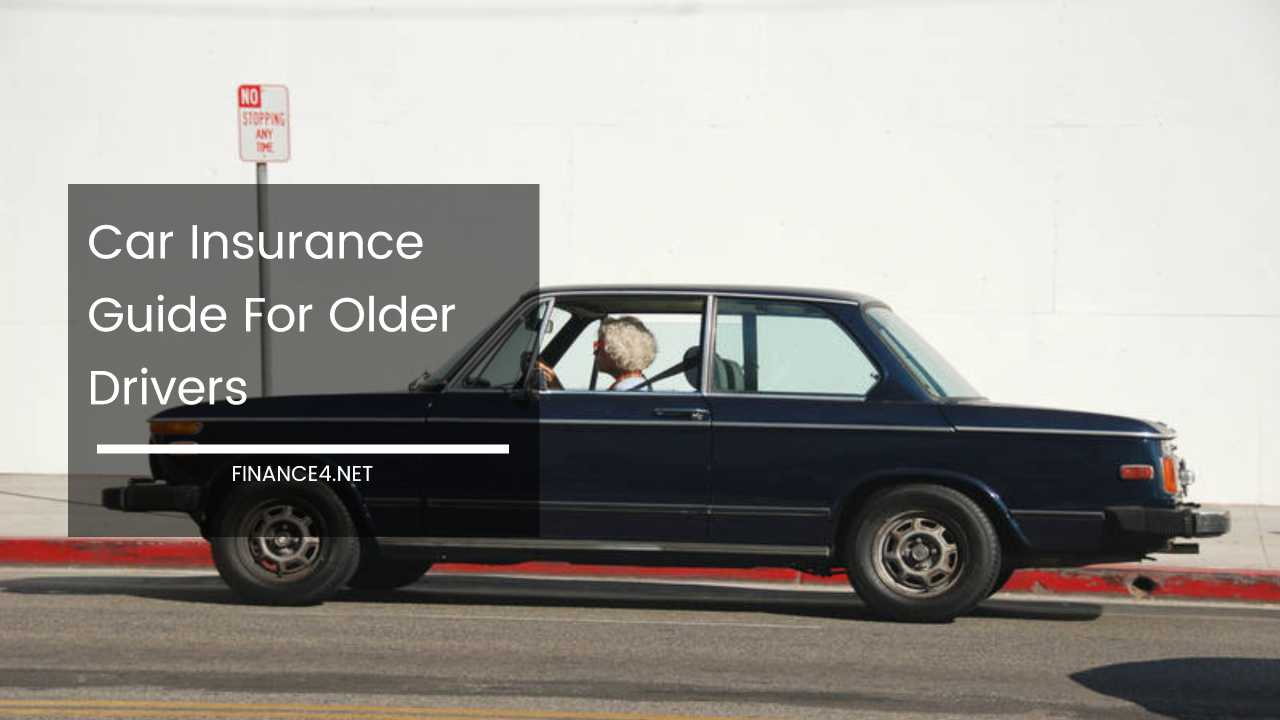Car Insurance Guide For Older Drivers

Our driving habits and needs transform as we age. We transition from daily commutes to more leisure trips, or perhaps consider downsizing to a smaller vehicle.
These changes often prompt a reevaluation of car insurance requirements. While navigating the intricate world of car insurance can be challenging for everyone, older drivers sometimes face unique considerations.
This comprehensive guide explores car insurance tailored for older adults, encompassing factors affecting rates, coverage options, valuable strategies for finding the perfect policy, and additional considerations for mature drivers.
Demystifying Rate Factors
-
Age and Experience: Contrary to what you might think, car insurance rates generally decrease as drivers age, up to a certain point. Statistics show younger drivers are more likely to be involved in accidents, often due to a combination of factors like inexperience and risk-taking behavior. Older drivers, with their wealth of experience and potentially safer driving habits, are seen as a lower risk by insurers, translating into lower premiums.
-
Driving Record: A Clean History is Key: A clean driving record is paramount for affordable car insurance at any age. However, for older drivers, a history of accidents or traffic violations can significantly impact premiums. Maintaining a safe driving record is crucial for keeping costs down. Consider defensive driving courses offered by reputable organizations like the American Automobile Association (AAA) or AARP Driver Safety to refresh your skills and potentially qualify for discounts.
-
Vehicle Choice Matters: The type of car you drive significantly affects your insurance rate. Older drivers often choose safer, more reliable vehicles. Cars equipped with advanced safety features like automatic emergency braking or lane departure warnings can qualify for additional discounts. Look for vehicles with high safety ratings from organizations like the National Highway Traffic Safety Administration (NHTSA) when considering a new car purchase.
-
Annual Mileage Makes a Difference: Many older adults transition to a more retired lifestyle, no longer commuting daily or taking frequent long trips, resulting in lower annual mileage. Insurance companies reward lower-mileage drivers with discounts because they pose less risk on the road. If you’ve transitioned to a more relaxed driving routine, inform your insurer about your reduced mileage to ensure you’re receiving the discounts you deserve.
-
Location, Location, Location: Where you live significantly impacts your insurance rate. Factors like population density, crime rates, and even weather patterns play a role. Urban areas with higher accident and theft rates typically have higher premiums compared to rural areas. Consider these factors when choosing where to live or park your car regularly.
Coverage Options Tailored for Your Needs
-
Liability Coverage: Protecting Your Assets: This mandatory coverage pays for damages and injuries you cause to others in an accident. Older drivers should ensure they have adequate liability coverage to protect their assets from lawsuits in case of an at-fault accident. Consider factors like your net worth and potential risks when determining the appropriate amount of liability coverage. Consulting with a qualified insurance professional can help you determine the right level of coverage for your situation.
-
Collision Coverage: Weighing the Value: This coverage pays to repair your vehicle if you’re involved in a collision with another object or car, regardless of fault. Older drivers with valuable vehicles may choose to keep collision coverage to protect their investment. However, if you drive an older car with a lower value, you might consider dropping collision coverage to save on premiums. Carefully evaluate your car’s value and your risk tolerance before making a decision.
-
Comprehensive Coverage: Peace of Mind Beyond Collisions: Comprehensive coverage protects your car against non-collision incidents like theft, vandalism, fire, and even weather damage. Older drivers may find peace of mind knowing their car is protected from a wider range of risks, especially if they park their car on the street or live in an area prone to certain weather events.
-
Uninsured/Underinsured Motorist Coverage: A Safety Net: This coverage protects you financially if you’re involved in an accident with a driver who lacks sufficient insurance to cover your damages. With potentially higher medical costs due to age, uninsured/underinsured motorist coverage is particularly important for older drivers. Consider the number of uninsured drivers in your area when deciding on the amount of coverage you need.
-
Medical Payments Coverage/Personal Injury Protection (PIP): These coverages help pay for medical expenses incurred by yourself or your passengers resulting from a car accident, regardless of fault. Older drivers may benefit from having additional medical coverage to account for potential age-related health concerns and ensure they receive proper medical care after an accident. Explore the options offered by different insurers and choose the coverage that best complements your existing health insurance plan.
Finding the Perfect Policy: Proactive Strategies
- Shop Around and Compare: Don’t settle for the first quote you receive. Get quotes from multiple reputable insurance companies to compare rates and coverage options. Utilize online comparison tools or contact independent insurance agents who can represent multiple insurers. This allows you to find the coverage that best suits your needs and budget. Don’t be afraid to negotiate with different providers – loyalty discounts can sometimes be applied even when switching companies.
-
Embrace Bundling for Savings: Many insurance companies offer discounts for bundling multiple policies, such as auto and homeowners insurance. If you own a home, consider bundling your car insurance with your homeowners insurance policy to potentially save on premiums. Similarly, inquire about bundling with other policies you might have, like Medicare supplemental insurance.
-
Discounts Deserve Asking: Insurance companies offer various discounts for safe driving habits, low mileage, being a mature driver (typically over 50 or 55 years old), and even having vehicles with anti-theft features. Don’t hesitate to ask your insurer about available discounts and inquire if you qualify for any additional savings. You might be surprised at the hidden discounts you can unlock simply by asking.
-
Telematics and Usage-Based Insurance: Pay As You Drive: Some insurers offer usage-based insurance programs that track your driving habits through telematics devices installed in your car or smartphone apps. These programs consider factors like mileage, time of day driven, and harsh braking events. If you’re a safe driver, you could qualify for significant discounts based on your actual driving behavior. This option can be a great way for older adults who drive cautiously to save money on car insurance.
-
Review Regularly: Adapting to Your Changing Needs: As your driving habits and insurance needs evolve, it’s crucial to review your coverage annually. Your insurance needs in your early retirement years may differ from your needs later when you might drive less frequently. Schedule a review with your insurance agent or revisit online comparison tools to ensure you’re getting the best possible coverage at the most competitive rate.
Additional Considerations for Mature Drivers
-
Health Changes and Medical Conditions: Certain medical conditions can affect your driving ability. Be transparent with your insurance company about any pre-existing medical conditions that might impact your driving. Some insurers may require a medical evaluation or driving test in certain situations. Open communication with your doctor and insurance provider is key.
-
Vision and Hearing: Regularly schedule eye and hearing exams to ensure you have optimal vision and hearing for safe driving. Address any vision or hearing concerns promptly, and update your insurance company if your license is restricted due to these factors.
-
Refresher Courses and Defensive Driving: Consider taking refresher courses or defensive driving programs offered by reputable organizations like AAA or AARP. These courses can help sharpen your skills, raise awareness of current traffic laws, and potentially qualify you for additional discounts on your car insurance.
-
Carpool or Ridesharing Options: Explore carpooling or ridesharing options, especially if you find yourself driving less frequently. This can not only save you money on gas and car maintenance, but also reduce your insurance premiums as you’ll be logging fewer miles.
-
Car Sharing Services: Consider car sharing services for occasional errands or trips. This can be a cost-effective alternative to car ownership, especially if you only need a vehicle on a limited basis. Just ensure your car sharing membership includes adequate insurance coverage.
By following these tips and understanding the unique factors affecting car insurance for older drivers, you can make informed decisions to secure the right coverage at the best possible price.
Remember, the goal is to find a balance between affordability and comprehensive protection that provides peace of mind as you navigate the road.



